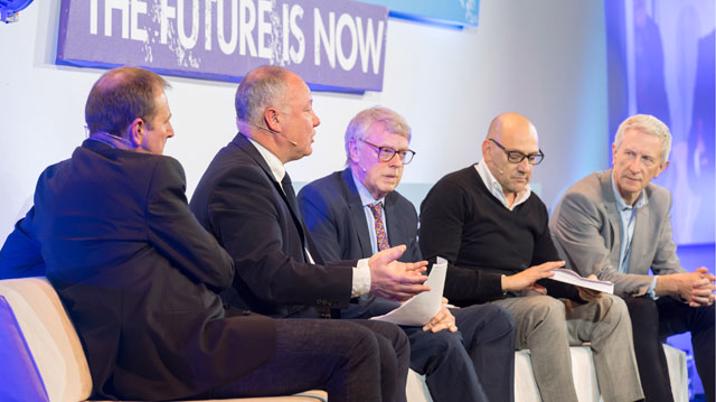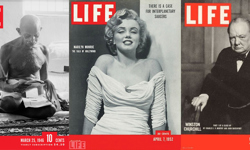
Notwithstanding all the usual caveats and honourable exceptions, it’s fair to say that in the news and consumer media sectors, the narrative has been a little bleak of late. Reports of falling sales, falling advertising, titles going under, titles going digital only, titles reducing pagination or changing shape, do not paint a pretty picture.
Yes, digital advertising is growing significantly, but mainstream media is not seeing much of that growth, as an eye-watering percentage of it is being hoovered up by Google and Facebook.
The social media and search giants march triumphantly on, to the sound of the death rattle of published media.
But, not so fast. Could there be change in the air?
Growing disquiet
The last nine months or so have witnessed the first indications that all might not be quite so perfect in the digital media offering.
First, there was the much talked about and still ongoing hoo-ha around the corrosive effect of fake news on platforms like Facebook.
Then, in February, The Times ran an investigation entitled ‘Big brands fund terror through online adverts’ warning that “household names unwittingly pay extremists and pornographers”. This related to the misplacing of advertisements on YouTube next to dodgy content. Unsurprisingly, the story was picked up with glee by other media outlets. A host of blue-chip companies pulled their advertising and the head of Google Europe felt compelled to issue a public apology.
This coincided with a growing feeling within the advertising and marketing community that the pendulum had perhaps swung too far; that the industry’s obsession with performance marketing and short-term activations had come at the expense of long term brand building campaigns and that some rebalancing was necessary. Alongside, and perhaps reinforcing this perception, was a growing disquiet over metrics – in particular the eschewing of industry wide standards by Facebook and YouTube in favour of using their own proprietary measurement systems.
“Marking your own homework” has long been anathema to the media buying community. After all, that’s the raison d'être of bodies like the ABC.
In January, Procter & Gamble chief brand officer Marc Pritchard complained: “We serve ads to consumers through a non-transparent media supply chain with spotty compliance to common standards, unreliable measurement, hidden rebates and new inventions like bot and methbot fraud.”
He went on to describe the digital supply chain as “murky at best, and fraudulent at worst”.
Simon Redican, CEO of PAMCo, clearly agrees. In his opinion, “lots of digital metrics are demonstrably nonsense!”
All the above is music to the ears of mainstream media which has struggled to make its voice heard and to present a good news story of its own; but we must be careful not to get carried away.
At the recent PPA Festival panel session on audience measurement, moderator Ray Snoddy asked Adam Crow, head of press trading at MediaCom, whether he was seeing increased bookings for published media on the back of these trends. “Not yet”, was the answer. Now, let’s be optimistic, put that down to time-lag issues and say that the advertising environment is truly starting to change.
With all these noises off, it’s hard to imagine a more opportune time for published media to launch a brand-new audience measurement system – AMP (Audience Measurement for Publishers). At the PPA panel session, the excitement and sense of anticipation was palpable. Immediate Media MD Advertising & International, Duncan Tickell, described it as an “incredibly powerful tool” and a “real opportunity to communicate the vibrancy of our medium”. It would, he said, allow the industry to get back on the front foot.
What is AMP?
AMP is the publishing industry’s replacement for the 60-year-old National Readership Survey and will be officially in-use from next February although the data is already being collected and being blended with NRS figures for all NRS releases this year.
The NRS system is essentially a print measurement tool, with some digital bits bolted on. AMP, which for the five-year period 2016-2020, is costing the industry £35m to develop and run, is a brand measurement tool, which will provide de-duplicated reach and frequency figures across platforms.
It represents, says Simon Redican of PAMCo, the industry body responsible for NRS and AMP, “better data, better research, better functionality”.
The pool of titles has been increased to 90 (from 28) and there is no cap. If a title grows to meet the audience thresholds, it’ll be added. Its key component parts are: 35k face to face interviews, a 5k digital panel all of whom have downloaded tracking software to their digital devices, the results of all of which are then melded with audience data from ComScore to produce the new AMP figures.
This is cutting edge stuff, and says consultant Katherine Page, who is advising PAMCo, there is “a lot of interest globally in what we’re doing”.
The new figures will give publishers a lot more inventory to sell and, for the first time, enable them to properly monetise their mobile reach. If an advertiser wants X million AB males, then AMP will now be able to deliver that.
At a recent press briefing, Simon and Katherine didn’t use the words “game-changer” but that’s what it looks like to me. A huge amount of planning has gone into AMP’s development, with the aim of creating a future-proof measurement tool that would stand the industry in good stead for the next ten to twenty years.
“The industry needs a story of transformation”, said Redican, “and this provides that. It will help get publishers over the tipping point in their journey from print to platform-neutral.”
2017 is a year of transition for PAMCo, as they move from NRS to AMP. The way they’ve decided to handle the transition is to blend the two data sets, steadily increasing the AMP portion of the blended figures through 2017. The recently released Q1 2017 figures contain one quarter AMP to three quarters NRS. The first 100% AMP dataset, covering the period Jan-Dec 2017 will be released in February 2018.
“With the arrival of AMP, we will have something our competitors don’t,” said Redican. In the UK, continued Simon, we are lucky to have joint industry currencies, which deliver authoritative, transparent industry agreed metrics.
So, what will success look like?
Err… more money, plain and simple. The industry has invested serious money in the development of this new metric and needs to see a commercial return. If the new figures are used assertively by the publishing sector to demonstrate the efficacy of marketing through published media, then Redican can see the money coming in. AMP not only demonstrates the cross-platform reach and engagement of published media, but it also makes the inventory easier to buy. And, he says, generally speaking, if you make something easier to buy, then ultimately you sell more of it!
The ball’s in our court
Before we all start celebrating the rebirth of publishing, Simon sounds a note of caution.
“People have got to be realistic in their expectations of what industry currencies on their own can deliver. It’s in our hands; if publishers use it properly then it can make a difference. And, the timing is fantastic.”
For Simon, the number one question for publishers is, how are you going to use the data differently from NRS? How engaged are senior commercial managers and their teams with it? PAMCo has been holding lots of briefing sessions, Redican has popped up on umpteen industry panels and they’ve recently appointed 40 ‘AMP Champions’ across publishers and agencies, whose job it is to spread the word.
With just over six months to go until AMP goes live, big publishers need a coherent strategy for how they plan to use the new data, so that they can hit the ground running in February.
“There are no excuses for not being ready.”
There’s also a willingness from the agency side to make optimum use of the new metrics. MediaCom’s Adam Crow says there’s a responsibility on the part of agencies and media buyers to be “AMP-ready”.
The industry’s marketing arms, Newsworks and Magnetic, make great play about the trusted environment of news and magazine brands and the deep engagement of their audiences. As the value of longer term brand building advertising starts to be reassessed after many years of being eclipsed by direct response, this represents a window of opportunity to claw back market share.
For small and medium size publishers whose titles don’t get measured by NRS / AMP, this might all seem a bit top-end and irrelevant. Perhaps, but as Simon Redican says: “a rising tide floats all boats”.
If the big brands can help change the terms of the debate and demonstrate the value of advertising in news and magazine media, then there will be a trickle-down effect benefiting the whole industry.
Finally, to end with, a short anecdote from Simon Redican. He recently bumped into an old friend, who was proudly showing off his brand new Aston Martin, which he’d purchased with the proceeds of a successful business venture. “Why an Aston Martin”, Simon asked, to which his friend replied that he’d had his heart set on one ever since he’d seen an Aston Martin advertisement when he was seven years old. The power of brand building! As Newsworks and Magnetic will tell you, there’s no better place to brand-build than in the pages (print and digital!) of published media. Very soon the industry will have the data to prove it.










